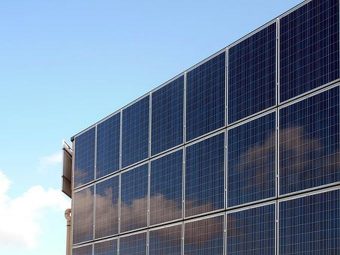
Cyprus Creek Renewables has partnered with LG Electronics on what is the largest solar-plus-storage installation in the continental United States. The project is located in coastal North Carolina. It’s an 8.5 megawatt series of solar installations bundled with 12 megawatt-hours of storage.
The solar generation in the system comes from nearly 22,000 of LG’s 395-watt solar panels installed across 12 different solar farms spread across southeastern North Carolina. Bundling the solar farms with storage allows Cypress Creek to offer flexible energy supply offerings to the utility. Naturally, the solar generation has the potential to shave off peak energy consumption in the heat of the day, but it can also be pushed through into high-demand evening hours and can last through cloudy periods.
“Creating a clean, sustainable future that’s accessible and affordable is central to LG’s goal of providing solutions that match changing needs in our communities, workplaces and homes – including innovative, intelligent solutions for energy conservation, solar energy and energy storage. LG’s involvement in these projects underscores the company’s commitment to providing innovative, market-leading solutions to its partners and customers,” said Tim Distler, head of solar business development, LG Electronics USA.
The LG panels used in the installation include LG’s innovative Cello wiring design (PDF), which makes use of specifically crafted wires that scatter light to nearby solar cells instead of reflecting it back out to the atmosphere as a more traditional solar panel ribbon wire would do.
The new wiring design also reduces electrical loss, increases power output, and improves panel reliability, as evidenced by LG standing behind the panels with a 15-year product warranty and a 25-year solar panel performance warranty.
LG’s NeON 2 panels add bifacial capability, meaning that the solar cells used in the panel are able to convert solar energy into electricity on the front of the cell and the back. Granted, with only the front of the cells facing the sun, generating power from the rear of the cell does not return anywhere close to an equal amount of power as the front, but the bifacial nature of the cells was taken into account with the design of the panel to maximize the generating potential of the rear of the solar cells.
It’s fun to take a dive into the latest and greatest micro-improvements in solar cell and panel design and to see how they are not just improvements in a government lab in a dark basement somewhere, but real improvements being rolled out in production solar panels at scale. The advancements in solar panel design translate into real efficiency improvements, with the front of the solar cell coming in at 21.5 % efficiency while the back still nets an impressive 20% efficiency.
If you’ve read this far, I highly encourage you to check out the easy-to-read LG NeON 2 product page if only to learn about the improvements in solar panel technology being realized in production panels that can be purchased today.
Source: cleantechnica.com



